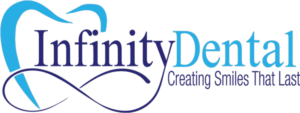Temporomandibular joint disorders (TMJD or TMJ), are notoriously difficult to diagnose and treat. Many of the related symptoms, such as headaches and earaches, often lead doctors to diagnose a sinus condition, as opposed to a problem with the jaw joint. TMJ symptoms often change in severity, depending on how much stress the sufferer is experiencing. During an intensely stressful period, grinding teeth, debilitating earaches and lockjaw may occur. Botox® injections are sometimes an effective and painless way to alleviate tension in the temporomandibular joint; reducing jaw pain, headaches and suffering.
Botox® is commonly associated with cosmetic practices, for example, eliminating glabellar lines and facial wrinkles. Recently however, Botox® has become an increasingly popular TMJ treatment. Although some TMJ symptoms may improve without any specific treatment, Botox® offers fast and long-lasting relief for those that do not.
Here are several of the major benefits Botox® offers TMJ sufferers:
-
Elimination of headaches caused by nighttime grinding.
-
Minimization of lockjaw.
-
Reduced discomfort when using the jaw.
-
Reduced shoulder and neck pain.
-
Substantially reduced jaw tension.
How does Botox® work?
The temporomandibular joint is located on both sides of the head where the skull adjoins the jawbone. This joint is constantly being used for a variety of daily activities such as chewing, biting, speaking and swallowing. The most prominent causes of TMJ are jaw displacement and stress-related involuntary jaw movements. Botox® expediently alleviates temporomandibular tension by relaxing the jaw muscles. This means that in most cases, the unconscious jaw movements cease completely, and the grinding-related headaches are kept at bay.
One of the major advantages of Botox® is that normal functions such as speaking, swallowing and biting are left unaffected. The only major change is the reduction in pain and discomfort. In addition, controlling TMJ can also prevent serious dental problems from occurring later. TMJ, if left untreated, can contribute to tooth decay, gum disease and the loosening of teeth.
What’s involved when getting Botox® injections?
Prior to administering Botox® injections, the dentist needs to check the patient’s suitability for treatment. When used in conjunction with certain medications and substances, Botox® may not produce the desired results. It is exceptionally important therefore, to be honest about prior medical history. Botox® is not recommended for pregnant or lactating women.
The Botox® injections take 10-20 minutes to administer, depending on the amount required. The Botox® procedure will be performed at the dental office, since it is non-surgical. Driving ability will not be impaired by the treatment, so there is no need for a designated driver. The injections are no more painful than a bug bite or pinprick, but nitrous oxide (laughing gas) can be used to reduce anxiety if necessary.
Normal activity can be resumed immediately after the Botox® treatment, but strenuous activity should be avoided for 24 hours after treatment. It may take several days to feel the full benefits of the treatment, but Botox® will continue to work for up to 3 months.
If you have any questions or concerns about TMJ or the Botox® treatment, please contact our office.



The hygienist did an excellent job on my teeth